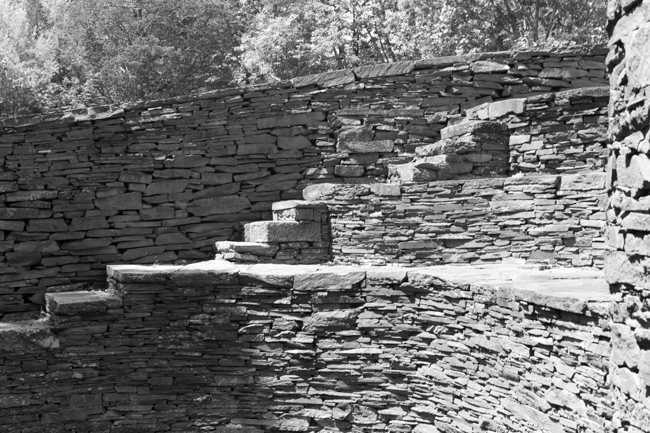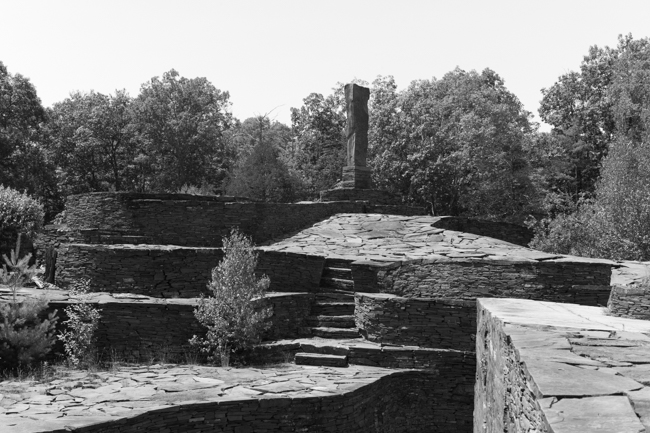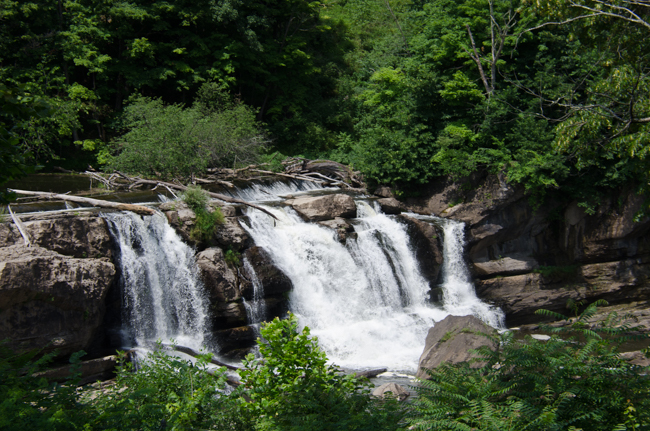Artist Cemetery
Woodstock, New York
The Woodstock Artists Cemetery is officially operated by the Woodstock Memorial Society, the original 80 ft. by 100 ft. plot of land was purchased by John Kingsbury following the tragic death of his son. Additional land was purchased and the Woodstock Memorial Society was incorporated on November 4, 1934.
In an effort to preserve the natural beauty of the landscape, the founding members sought to limit traditional symbols of grief. As a result, conventional tombstones and other visual intrusions were prohibited. As is still the case today, graves are marked only by ground-level stones, many crafted from native bluestone.
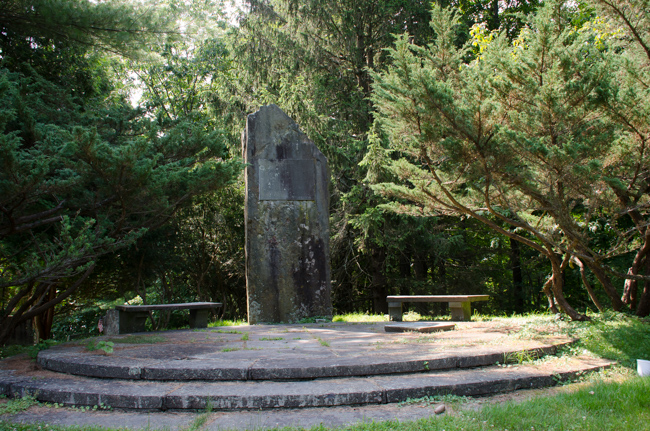 The Penning sculpture stands at the highest point of the hill. The poem, penned by Dr. Richard Shotwell reads: “Encircled by the everlasting hills they rest here who added to the beauty of the world by art, creative thought and by life itself.”
The Penning sculpture stands at the highest point of the hill. The poem, penned by Dr. Richard Shotwell reads: “Encircled by the everlasting hills they rest here who added to the beauty of the world by art, creative thought and by life itself.”
 Shotwell was a Columbia professor, who attended the Paris Peace Conference at the end of World War I and helped draft the United Nations Charter after World War II.
Shotwell was a Columbia professor, who attended the Paris Peace Conference at the end of World War I and helped draft the United Nations Charter after World War II.
The only other above ground structure permitted is the memorial honoring the life of Byrdcliffe founder Ralph Whitehead and his family. Woodstock became a draw for artists in 1902 because of Byrdcliffe, which was one of the country’s first intentional arts communities.
The cemetery is the final resting place for artists as diverse as Robert Koch, the Academy-Award-winning screenwriter of Casablanca; American modernist painter Milton Avery; WPA muralist Ethel Magafan, children’s book author Paula Danziger; and pianist Richard Tee, who played on Paul Simon’s “Slip Slidin’ Away.”
The legacy of some artists buried there has endured while the names of others, once well known, have become obscure, such as this grave of Clinton Woodbridge Parker.

Bolton Brown, carved his own birth and death years (as he felt the end approaching) into a boulder for his grave marker.
Brown was an artist, Lithographer, and Mountaineer. Brown was one of the founders of the Byrdcliffe Colony. He attended Syracuse University, Syracuse, New York, where he received his Masters Degree in Painting. In 1891 he moved to Stanford, California to create the Art Department at Stanford University and was head of the department for almost ten years, but was dismissed in a dispute over his use of nude models in the classroom. Mount Bolton Brown in the California Sierras, is named in his honor.
The Sculpture Garden of
The Woodstock School of Art
In 1996, Pascal Meccariello, from the Dominican Republic, Alan Counihan, and Colm Folan, from Ireland, and husband and wife Hideaki and Eiko Suzuki, from Japan, were part of the Woodstock School of Art Sculpture Residency. They each picked various sites in the woods behind the school and created beautifully intricate sculptures, mostly of stacked bluestone.
Opus 40
50 Fite Rd
Saugerties, NY
Opus 40 is the work of just one man, Harvey Fite. The sculpture, made of bluestone from the local quarries, covers 6 1/2 acres
Fite created Opus 40 by hand. The work, which he said would take him 40 years (thus the name), consisted of ramps, stairways, pools, moats and other configurations carved in the bluestone. It was to be completed in 1982, but Fite died three years prior in an accident.
Mr. Fite, studied art at St. Stephen’s College and in Florence, Italy, where he studied with Corrado Vigni.
His works are on display in the Whitney Museum of American Art and the Albany Institute of History and Art. In 1938 Fite was commissioned by the Carnegie Institution in Washington to restore ancient Mayan sculpture in Copan, Honduras. His work was shown in 1953 and 1954 as part of the Department of State traveling group shows in Europe and Africa.
Opus 40 was added to the National Register of Historic Places in 2001 and has been described in Architectural Digest as “one of the largest and most beguiling works of art on the entire continent.” *
* *
*
High Falls
High Falls, a stunning natural waterfall, is not far from Opus 40. Situated on the Saranac River, it provides hydroelectric power.



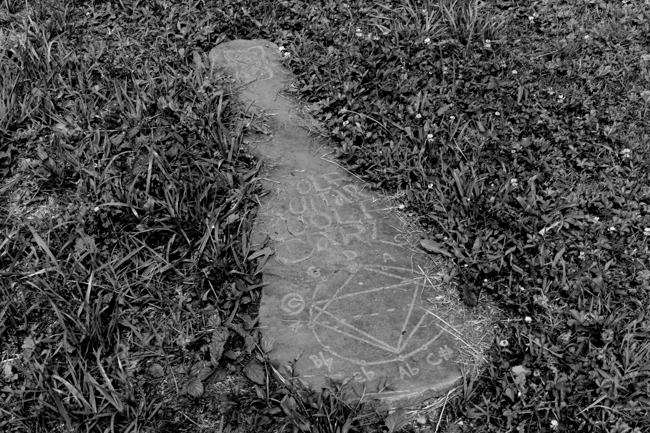
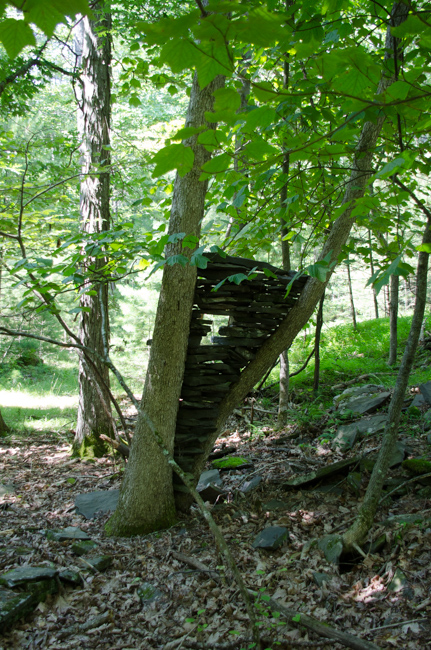
 *
*



